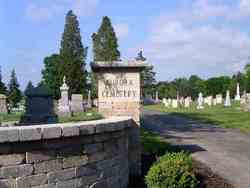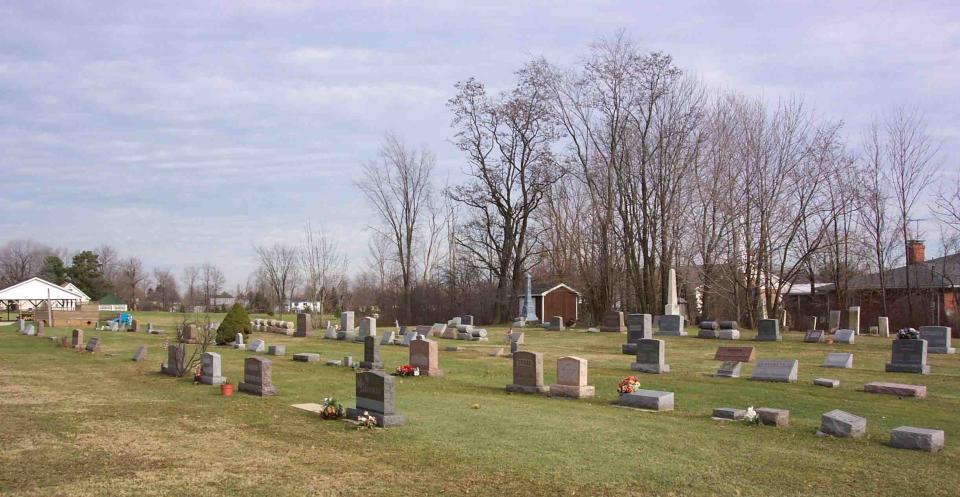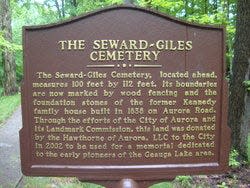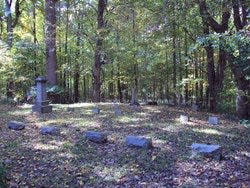Aurora's cemeteries an important resource in the community's history
Remember when you were on that family vacation, driving for hours with your kids asking, “when are we going to get there?” Before the days of electronic devices and in-car WiFi, remember racking your brain to find something to occupy their time. One game involved counting the number of animals outside the window on their side of the car. A child would be elated when he or she would come across a pasture filled with cows. And then say, “I quit,” when a cemetery was passed and the count had to start over.
More than part of a child’s game, cemeteries are an important resource in the history of a community. Cemeteries reveal information about historic events. They can indicate the religious and ethnic makeup of the community. They are a valuable source of genealogy. The headstones and monuments tell a history of the individuals who played an important part in the history of the area. The names, occupations and epitaphs tell a story.
There are four cemeteries located in Aurora. The city cemetery is the largest and is located on Route 43 in the center of town. Another city-owned cemetery is part of the Mennonite Cemetery located on East Mennonite Road. It shares the land with the larger portion of the cemetery belonging to the Mennonite Church. The Seward-Giles Cemetery located on Aurora Lake Road is also owned by the city. The Jackson Family Cemetery is privately owned and is located on the northern end of the city along Chillicothe Road.

Aurora’s earliest record of a burial was that of twenty-two-year-old Rhoda Cochran who died on Christmas Day in 1806. The Cochrans were from Blandford, Massachusetts. Rhoda, physically helpless due to rheumatism, was carried all the way to Aurora in a bed. Her father, John, died in Buffalo during the family’s journey to Aurora. It is believed that she was initially buried on the property next to what would become the Congregational Church in the center of town. It was later moved to the “burying ground” which later became the Aurora Cemetery.
As the town grew so did the need for a larger area for burials. It is unclear as to when exactly the Aurora Cemetery was established. It is most likely well before the burial of Samuel Forward in 1821. The earliest recorded sale of land for the cemetery was recorded in 1813 when, for the consideration of $50, Samuel Ferguson sold a portion of Lot 18 in the center of the township for the purpose of a “burying place.” In 1857, Hopson Hurd and his wife, Betsy, for the consideration of $33, sold additional land in Lot 18 to the township “to add and adjoin the Public ground for burial purposes.” Another 1.0576 acres in the southwest corner of the cemetery was purchased by the township trustees from Lillian and Joel Brewster and the heirs of Frank Hurd for $300. In 1924, the trustees attempted to purchase additional land adjacent to the cemetery. Unable to agree to a sale price the trustees proceed to secure the land through eminent domain. Over the years the cemetery has grown to cover more than 13 acres.
The oldest portion of the cemetery is Section A located along Route 43, with Sections B and C on each side of Section A. It is in Section A where the oldest headstones are located of which many made of sandstone and the information and epitaphs have eroded. Section G, located in the northwest corner of the cemetery, is the Veteran Section, however there are veterans buried throughout the cemetery. A section of G is also designated as the “Baby Section.”
The remains of over 642 veterans from the nation’s conflicts are buried in the cemetery. There are 15 veterans from the American Revolution, 29 from the War of 1812, 24 from the Civil War, six from the Spanish-American War, 53 from World War I, 296 from World War II with the remaining from the Korean War, Vietnam, the Gulf War, and the War on Terrorism. There are numerous Aurora veterans who are interred in other cemeteries in the region as well as those who were either buried overseas or lost at sea during World War I and World War II.

The Mennonite Cemetery is comprised of two sections. The newer and larger portion of the cemetery belongs to the church. The “old section” is city owned and maintained. The land was part of the Cannon family farm. In 1824, descendants John and Abigail Bleckman deeded for the consideration of “One Dollar” 80 rods of land “for the express purpose of a burying place.” The cemetery was referred to by township officials as the “Cannon” cemetery. In 1919, the township sought to abandon the “easterly half” of the cemetery. They resolved to notifying that “family and friends of any person or persons now buried in that portion of said cemetery...that any body or any headstone or monument…must be removed…” The plan was to sell the land at public auction. Apparently, the trustees did not follow through with the sale and the “Old Cemetery” still remains in the ownership of the City of Aurora.
As record in Pathways to Portage, Aurora Mennonite Church, 1905-2005, the “Old Cemetery” measures 169 feet by 80 feet. The first burial was circa 1811 with the oldest monument with the name “Bleckman” date 1813. Elijah Bleckman was a soldier in the Revolutionary War. According to records there are approximately 44 gravesites. The first Mennonite buried in the cemetery in 1909 was 3-day-old Bentley Stutzman, the infant son of Alex and Cora Stutzman. The cemetery is also the final resting place of veterans from the War of 1812, the Spanish-American War, World War II and the Korean War.

The Seward-Giles began as a family cemetery in which the Sewards, Giles and McClintock families, residents of Aurora, Solon and Bainbridge buried family members. The first burial is believed to be that of Joel Seward, a veteran of the American Revolution who was born in 1733 and died in 1826. For over 150 years the cemetery was left untouched. Overgrown by nature, headstones were broken, overturned and in disrepair. The cemetery was “rediscovered” in 1980 and was followed by many years of research and negotiations. In 2002, the City of Aurora and the developers of the Hawthorne Development reached an agreement in which the land was donated to the city and an easement was granted for public access to the cemetery. The City of Aurora’s Landmark Commission worked to identify the gravesites and to restore the area. In 2008, the Seward-Giles Cemetery was dedicated in a ceremony which involved the Western Reserve Society of the Sons of the American Revolution. The cemetery measures 100 feet by 112 feet and it is believed that there are approximately 25 to 35 burials.

The Jackson Family Cemetery is a private cemetery. John Erastus Jackson died on April 16, 1869 at the age of 75. When he first arrived with his parents in 1813, he looked upon a small knoll alongside of the Aurora branch of the Chagrin River and pointed to the place where he said, “This is the knoll of my dreams and I am going to be buried here. No one else need be unless he wants to.” The knoll is the site of the Jackson Family Cemetery and is the resting place of members of the Jackson family. Jackson, an abolitionist, fiercely spoke out against the institution of slavery. He was an ardent critic of the 1850 Fugitive Slave Act, which required that runaway slaves be returned to their owners, even if they were in a free state. His home was a station on the Underground Railroad and, according to family records, not only were runaway slaves hidden behind the falls at Centerville Mills, but that several slaves who did not survive the journey to freedom are buried in the family cemetery.
In the program from the 2008 dedication of the Seward-Giles Cemetery it was stated that, “Sewn into the historic fabric of Aurora’s past are the stories and lives of the men and women who lived, worked and fought for this country and city. Many lived ordinary lives, but others contributed mightily to the establishment and growth of the city we call Aurora. Their lives are honored, commemorated and remembered in the cemeteries within the city.”
Printed with the permission of the Aurora Historical Society which retains rights to all content and photos.
This article originally appeared on Record-Courier: A history of Aurora’s cemeteries

